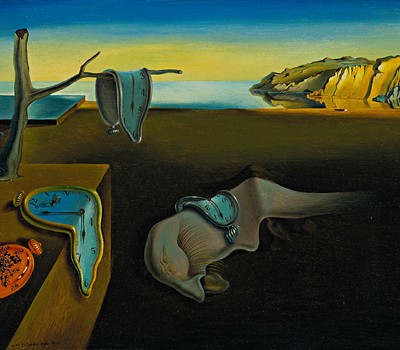Salvidor Dali
Pompidou Centre, Paris, November 21st to March 25th
The Surrealists were wacky but Dalí was wackier. His paintings of wobbly clocks, oversized limbs, waiflike figures—half human, half chest of drawers—reveal less than a snippet of his imagination. “My painting is like an iceberg,” he once said, “which shows only a tenth of its volume.” Under the ice lurks an even more surreal Mr Dalí, and a new exhibition at the Pompidou Centre in Paris promises to dig deep.
A flamboyant exhibitionist, with a haughty expression, walking stick and freshly waxed moustache, Salvador Dalí carried with him an air of controversy. His work flutters between the disgusting and the filthy, the monstrous and the totally bonkers. Halfway between enchanting fairytales and gruesome horror stills, his paintings are packed tight with colour and symbolism. “The Persistence of Memory”, 1931 (above), is a prime example. His meticulous attention to detail and deliberate confusion transports us into a world of enhanced hyper-reality, a method he labelled “paranoiac critical”.
His paintings are not beautiful. They spark no great emotion and can be fiendish to untangle. But what they do show is rare technical ability. Beneath the megalomania is a man who knew exactly how to use his brush, combining expert Flemish-style accuracy with the showy baroque of Old Master painting. “Soft Construction with Boiled Beans”, 1936, shows Dalí’s savage vision of his country during the Spanish civil war. A fleshy, decomposing figure rips itself apart against a sky that is almost Raphael-like. “I am a man of the Renaissance,” he said, “I would sign a pair of pants if someone commissioned me to.”
Pants is pushing it, but he did produce a range of gimmicky knick-knacks and a mass of dodgy prints—he signed thousands of blank pieces of paper with a colourful array of signatures and is now one of the world’s most forged artists. He may have liked the odd gag, but beneath the bravado is substance, and a modern master who stretched and reshaped the story of art.


Comments are closed.